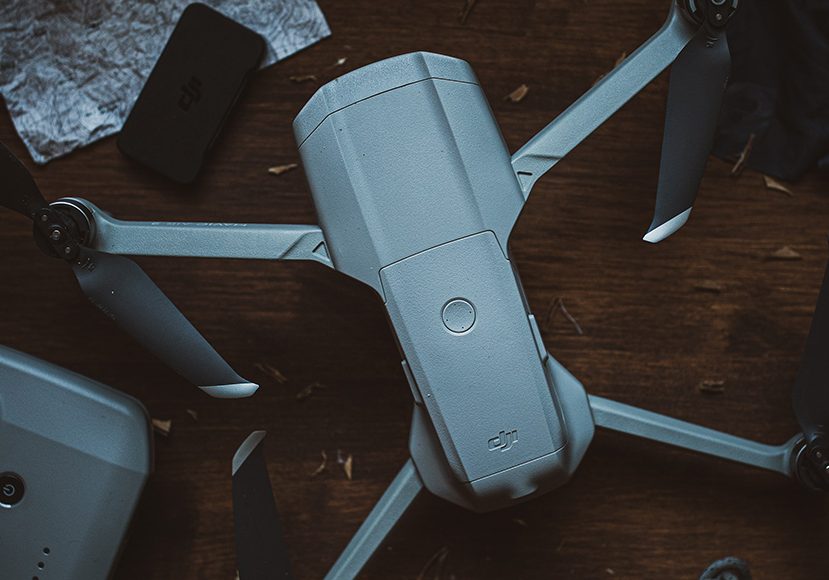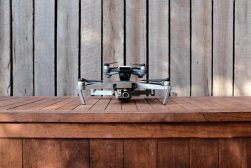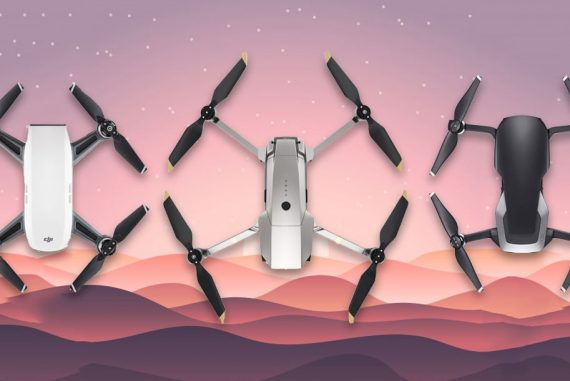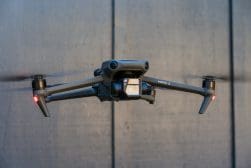
8 Interesting DJI Statistics (Fact Checked for 2024)
Discover all the most up-to-date facts, figures and statistics about DJI. The perfect resource for journalists, updated for 2024.
Learn | Statistics & Facts | By Jeff Collier | Last Updated: February 6, 2024
This article is an updated list of 8 interesting DJI statistics for 2024.
DJI is a Chinese multinational corporation that specializes in aerial photography and videography gear.
Among DJI’s most notable product lines are the Phantom Series, the Spark, the Mavic Series, and the Matrice Series.
The Ronin camera platform is a superstar in cinematography, and the Osmo Mobile camcorder is a brilliant compact 4k device that is an absolute favorite among social media folks.
Find out more in our up-to-date roundup of DJI stats.
You might also be interested in our other statistical articles on Fujifilm, Nikon, Sony, Leica, GoPro, Canon and Panasonic.
- DJI is 16 years old
- In 2009, DJI flew a drone prototype around the peak of Mount Everest
- $90,000 from Frank Wang’s family friend saved DJI
- DJI launched the Phantom in 2013 and the Phantom 3 in 2015
- DJI has an Emmy Award
- DJI currently dominates around 70% of the global drone market
General DJI Statistics
Flying unmanned aerial vehicles was a fantasy till the turn of the millennium. It became a solid reality around 2010, and thanks to DJI, many consumers had easy access to the technology.
DJI appeared in the market in 2006. The founder is Frank Wang, who was still studying in college when he founded the company. The headquarters of DJI is in Shenzhen, Guangdong, which is the Silicon Valley of China.
DJI controls more than 70% of the drone market, thanks to its excellent aerial photography and videography gear. The company also makes camera gimbals, stabilizers, and propulsion systems, in addition to flight control systems and robotics.
1. DJI Is a Young Company, Only 16 Years Old!
Frank Wang founded DJI while studying at the University of Science and Technology. He had won the Asian-Oceanian college robot competition, and soon afterward, got the attention of various tech sector officials.
Wang received a grant of about $35,000 to pursue his work on drones, which paid off big time, as he was able to build the first prototypes of his drones and market his flight control components.
In 2006, DJI took form, and the journey toward making the finest drones in the world began.
2. In 2009, DJI Flew A Drone Prototype Around the Peak of Mount Everest
DJI was still trying to find its footing, direction, and purpose. The company had been operational for only three years, and it was floundering in many ways.
By 2009, the design team had put together a brilliant unmanned aerial vehicle, or as we now know it, a drone. Flying it all the way to the peak of Mount Everest seemed like a nice idea to attract attention.
The demonstration of prowess worked like a charm, and the company created a buzz way bigger than anyone had previously imagined.
3. $90,000 From Frank Wang’s Family Friend Saved DJI
Frank Wang was a genius in tech, but he wasn’t just as clever in people management. Wang had the double predicament of having a hot temper and extra high expectations from his team.
Naturally, the company couldn’t retain much of its workforce. The quick turnover affected both the product development and sales departments. In other words, DJI was sinking before even leaving the shore.
A friend of Wang’s family, Lu Di, intervened and infused a hefty sum of $90,000 into the company. Moreover, Di took over the financial management of DJI. After that, things looked up in a big way.
4. DJI Goes to the West, Exploring New Places and Old Friendships
Frank Wang had a friend from school who was also a marketing wiz. In 2010, Wang hired his school friend and handed him all the keys to the marketing department.
Swift Xie Jia, the school friend, knew quite well that the way to success was to the west. DJI started focusing on the requirement of western aviation hobbyists, and that new direction was reflected clearly in their subsequent designs.
How Much Do You REALLY Know About Photography?! 🤔
Test your photography knowledge with this quick quiz!
See how much you really know about photography...

At one of the trade shows, Wang met another businessman, and together they decided to move the operations to the US. Colin Guinn, the new friend, handled the new subsidiary which became DJI North America.
5. In 2013 DJI Launched the Phantom, and a Friend Turned Into an Enemy!
Driven by the new-found excitement and buzz around drones, Wang came up with a design that surpassed everything that he did before, or the markets have seen before; The Phantom.
Interestingly, the release of the Phantom was a blessing and a curse for DJI North America. Wang tried to buy out Guinn, but the latter refused. Litigation and various standoffs ensued, but the conflict was finally resolved.
However, the Phantom was relegated to the back burner for a little while.
6. In 2015 DJI Released the Phantom 3 and Ruled the Market
The Phantom had a good run for a couple of years, but another drone turned it into a relic.
In 2015 DJI released the Phantom 3, with an added feature of live streaming. This created an unprecedented spike in DJI’s sales and crowned the brand as the best in the whole world.
7. DJI Has an Emmy Award
Wang and his team knew that cameras were the absolute best features of the DJI drones.
DJI engineers added consistently to the other features like the non-crash sensors, tracking features, and GPS controllers. However, Imaging and videography always took center stage.
Hollywood soon capitalized on the new tech and the endless possibilities of aerial cinematography shots. TV shows like The Game of Thrones and American Ninja Warrior were among the pioneers of drone cinematography.
In 2017, DJI received the 69th Annual Technology & Engineering Emmy Award.
8. DJI Currently Dominates Around 70% of the Global Drone Market
It’s not a huge surprise that DJI has a 70% market share in the post-pandemic market.
Drones have numerous applications in photography, cinematography, agriculture, education, and surveillance, among many other fields. Thus, we can confidently predict a consistent increase in drone sales and innovation.
In 2022, the overall DJI drone sales amounted to $30.6 billion, and it’s believed to reach more than $55 billion by 2030.
Sources
1. https://interestingengineering.com/innovation/a-brief-history-of-drones-the-remote-controlled-unmanned-aerial-vehicles-uavs
2. https://www.dji.com/company
3. https://www.cnbc.com/2023/02/08/worlds-largest-drone-maker-dji-is-unfazed-by-challenges-like-us-blacklist.html#:~:text=DJI%20currently%20dominates%20more%20than,to%20%2455.8%20billion%20by%202030.
4. https://droneii.com/product/drone-market-report
5. https://www.dji.com/newsroom/news/dji-wins-2017-emmy-award-for-technology-and-engineering
6. https://www.premiumbeat.com/blog/dji-won-over-the-film-industry/
7. Camera industry facts and figures

Check out these 8 essential tools to help you succeed as a professional photographer.
Includes limited-time discounts.













